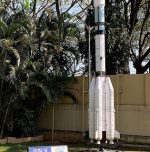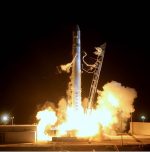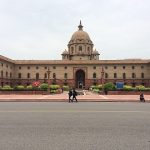Aditya L1 Solar Observatory mission: Illuminating solar mysteries

In a monumental leap for space exploration, the Indian Space Research Organisation (ISRO) is poised to unveil its latest triumph: the Aditya L1 Solar Observatory.
After the resounding success of Chandrayaan-3, ISRO is preparing to launch a groundbreaking solar observation venture on September 2, 2023.
Named Aditya L1 after the heart of the Sun, this pioneering mission is set to revolutionize our understanding of solar activities and their far-reaching effects on space weather.
Positioned at a strategic vantage point, the Aditya L1 spacecraft is destined for a halo orbit around Lagrange point 1 (L1) of the Sun-Earth system.
This position located a staggering 1.5 million kilometres from Earth, ensures an unobstructed view of the Sun, unhindered by the shadow of eclipses or occultation.
The mission’s primary goal is to provide real-time insights into diverse solar phenomena, enabling scientists to comprehend solar activities and their direct impact on space weather patterns.
Equipped with a formidable array of seven advanced payloads, the Aditya L1 mission is designed to scrutinize every layer of the Sun, from its surface to its outermost corona.
Employing cutting-edge electromagnetic, particle, and magnetic field detectors, these payloads will capture critical data that is essential for unravelling the enigmas of the solar world.
The real magic lies in the mission’s unique perspective, as it peers directly at the Sun from the unparalleled vantage point at L1.
Four of the payloads on Aditya L1 will provide crystal-clear observations of the Sun’s dynamic behaviour.
Simultaneously, the remaining three payloads will delve into in-situ studies of particles and fields at this strategic Lagrange point.
This unified approach holds the promise of unlocking the secrets behind solar dynamics, a better understanding of space weather drivers, and more.
Notably, Aditya L1’s ambitions extend to investigating the perplexing solar corona heating mechanism, magnetic field configurations, and the intricate development of coronal mass ejections.
Scientists are abuzz with anticipation, as they foresee this mission’s data as the key to deciphering the sequence of processes culminating in dramatic solar events.
Aditya L1 is poised to not only deepen our insights into the intricate workings of the Sun but also provide a clearer comprehension of its reverberations across the interplanetary expanse.
As India readies to make its mark on solar observation with Aditya L1, the future of space weather understanding appears dazzlingly bright.
Image by Propicture from Pxhere (Free for commercial use / CC0 Public Domain)
Image Reference: https://pxhere.com/en/photo/1631663








Leave a Reply